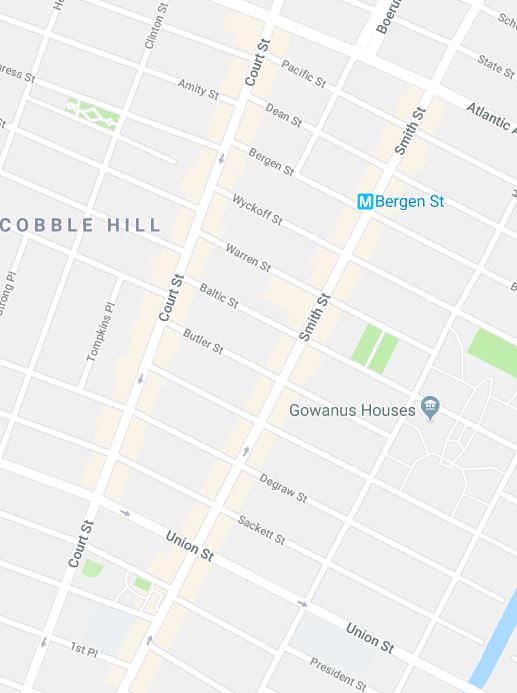Jan 26, 2018 · newsletter
Google Maps' Competitive Moat - Why Better Data Matters
Justin O’Beirne recently wrote a blog post surveying the landscape of mapping apps and sites (with particular focus on Google Maps and Apple Maps). This is one of a series of pieces O’Beirne has written comparing Google and Apple Maps. In short, O’Beirne concludes that Google has a substantial competitive advantage in mapping that boils down to having better data.
The article is centered around the example of Google’s Areas of Interest feature. Simply put, Google adds subtle shading around areas that are commercial districts, i.e., clusters of restaurants and shops, while Apple does not. This feature is quite useful as it reflects the way humans think of cities in terms of their commercial districts.
Court and Smith Streets are commercial districts in the Cobble Hill neighborhood of Brooklyn
Google built this feature from two distinct datasets: satellite imagery and street view imagery. Apple has - or had - access to similar datasets, but Google outpaces Apple in both categories to great effect.
Google uses machine learning and computer vision to digest huge volumes of satellite imagery into 3D outlines of buildings with great detail, and they do it automatically, resulting in tremendous coverage within the United States with very high accuracy. Meanwhile, Apple appears to buy its building data from outside vendors.
Google also uses machine learning to process its street view imagery to understand which businesses are where. This provides very precise positioning of businesses that allow Google to define the boundaries of Areas of Interest with great accuracy.
Applying machine learning to these two datasets gives Google a superior product to begin with: more coverage of (and more accurate) building models, and more accurate building locations. But combining these datasets yields a further advantage. Google knows exactly where buildings are and what they contain, so they can automatically define Areas of Interest. Apple simply lacks the data to do so.
In sum, Google’s applications of machine learning and access to superior data make possible a useful feature that Apple just cannot compete with in a meaningful way.











